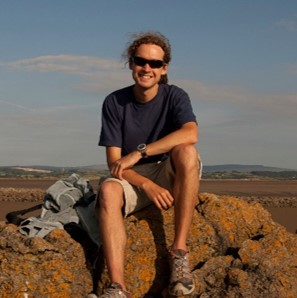River model
One of the key determinants of the fate of nanomaterials in the environment is how they move through rivers. Within the gridded NanoFASE water-soil-organism model, rivers are split up into a number of linked "river reaches", the conceptual model for which is shown below. Each reach has a bed sediment, which is documented separately.

Conceptual model of river reaches and their bed sediments within the NanoFASE water-soil-organism model
A number of processes transfer water, sediment and/or nanomaterials to/from each reach:
- Surface runoff from the surrounding soils provides water to the reach, and also causes erosion of the soil surface, which moves sediment and nanomaterials into the river.
- Point sources of nanomaterials (such as treated sewage outfalls) and deposition from the atmosphere transfer nanomaterials into the river.
- Sediments suspended in the water column can settle to the bed, transfering suspended particulate matter (SPM) and heteroaggregated nanomaterials to the bed sediment
- Conversely, sediments in the bed can resuspend into the water column. This transfers nanomaterials attached to the sediments.
- Advection (the bulk flow of water) moves water, suspended sediments and nanomaterials (either freely suspended in the water column, or attached to suspended sediment) to/from the downstream/upstream river reach.
Nanomaterials within each reach can undergo certain transformations, which change their form or state: (i) Heteroaggregation to suspended sediments; (ii) Dissolution; (iii) Chemical alteration such as sulfidation or oxidation. This list of transformations is not exhaustive and the model is flexible enough to allow other transformation processes to be added. Certain processes will not be relevant to particular nanomaterials, and so the user can choose which processes should be modelled.
Read more |
Read also |
|
Visit the NanoFASE Library to read summaries of these reports: NanoFASE Report D2.1 Specification for the NanoFASE model |
|
Contact
 Sam Harrison
Sam Harrison
Centre for Ecology and Hydrology (CEH)
